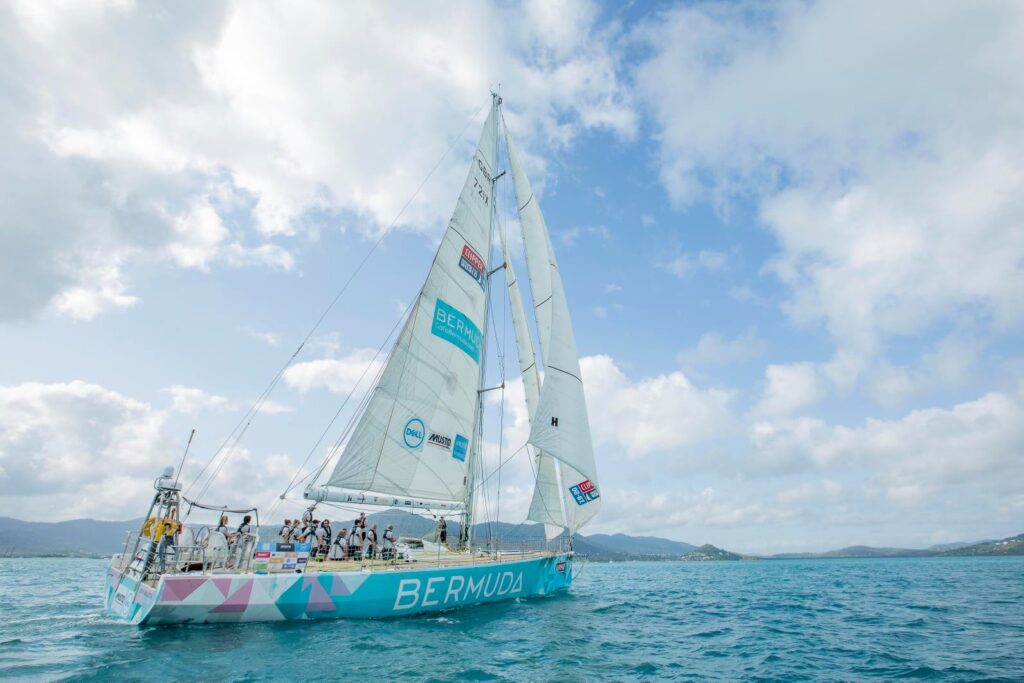Is it Dangerous to Sail Across the Atlantic?
Sailing across the Atlantic Ocean has always been a dream of yours. But, what you want to know now is if sailing across the Atlantic is dangerous. There are two main routes to choose from. If you start sailing east and head west, you can pass through sections of the country like Cape Verde, the Canary Islands, and Portugal. Another option is to travel along the Northern Passage. So, are you in for a difficult voyage, regardless of whatever path you choose? Overall, I believe that sailing the Atlantic Ocean is not really dangerous. As a matter of fact, it can be a quite peaceful voyage at most times. However, your experience will mostly depend on the time of year you visit and the route you take. So, let’s see if sailing across the Atlantic is really dangerous. Keep reading!
Important Information to Cross the Atlantic
Sailing across the Atlantic Ocean largely depends on the season, wind direction, crew experience, available equipment, and, of course, the boat. Keep in mind that the Atlantic, Pacific, and all other oceans, seas, channels, straits, lakes, and indeed any other bodies of water have been crossed and recrossed in countless numbers of vessels. Smaller boats, unseaworthy boats, rafts, canoes, rowboats, and so on have all done this. Of course, there have been occasionally failed crossing efforts, but for the most part, they have been successful.
Some people can’t even go out to sea for any reason. Regardless of the size of the boat, anyone who sets out to cross deep water that is vulnerable to significant variations in weather and surface conditions is entering risky territory. But, with today’s equipment and safety gear, crossing an ocean has become about as safe an effort as one can make. And, with so many boats and equipment available on the market, it’s almost carefree. Let’s just say that there are boats in the 30-foot range on the market that remove most of the risk out of this endeavor.
In other words, it is not at all dangerous if you plan ahead of time and choose the proper dates. Meaning that you have to avoid storm and hurricane season, follow prevailing winds, etc. It’s been done before, and 30 feet is surely an appropriate size. But, keep in mind that an average voyage will have a duration of 2 to 4 weeks. So, you have to be ready for that and find enough stimulation. Also, if you intend to do it alone, go for it. For solo voyaging, 30 feet is a perfect size.
Best Types of Boats that Can Safely Cross the Atlantic
A thirty-foot sailboat may be suitable for one or two people, but with more than that on board, it becomes crowded. In addition, a full keelboat or a nice modern weighted keelboat with fully enclosed and self-righting capabilities is the top choice. Because keelboats have a gentler motion than catamarans or trimarans, which oscillate more quickly laterally, they are appropriate for long voyages. In rough weather, the keelboat is more forgiving than a catamaran and will ride the waves more gently.
I believe that a keelboat is a safer boat for lengthy voyages and that one should not try to sprint across. Knowing that one does not need to carry full sail to make excellent headway, rain or sun would reduce the risk.
A 30-foot boat with modern electronic communication and navigational assistance is a very safe boat, especially if it’s a well-tried keelboat with a good rocker and a Vee’s bottom. So in case it comes off a wave, it won’t slam and shudder but will enter the drop into the water with a slow reduction of vertical momentum.
The passage should be very enjoyable if one is wise in realizing that the elements are what they are and that one should not fight them as much as one does in racing conditions. So, while one cannot forecast the unknown, based on experiences sailing a 30-foot keelboat with a modest sail rig and an 11 HP Yanmar engine, you can do well in any weather you encounter. For extended trips, I would always pick a keelboat with narrow side decks, as keelboats are renowned to maintain a stable angle even when upside down. One with a full cabin extending to the side and high decks would be considerably easier to roll over.

>>Also Read: Is It Dangerous to Sail Around the World?
Planning your Voyage
Sailing across the Atlantic Ocean demonstrates a sailor’s ability and skills. The journey can take 30 to 40 days, and it is not without risk. Large waves and bad storms might disrupt your trip even if you sail outside of hurricane season. Keep in mind that there are also freighters, boats, and even whales to be aware of.
The first step in your journey across the Atlantic Ocean is to plan your route. The next step is to make sure you’re as prepared as possible for the journey. This includes not only obtaining the necessary supplies but also ensuring that you are physically and emotionally prepared for the extended period of time at sea that lies ahead. It’s critical to have a boat that’s well-equipped and outfitted. The big question is: how dangerous do you think it will be? Are you a confident sailor? Do you know what you’re doing and how to go around? Do you know what it’s like to be in a storm at sea? A well-equipped 30-foot watercraft is capable of going anywhere. So, if both your vessel and you are up to the task, and plan your voyage carefully you’ll be good to go!
When to Cross the Atlantic
Certain seasons of the year are far better than others for organizing such a voyage. You must account for not only the outside temperatures but also the likelihood of inclement weather. From June to November, when temperatures in the United States are at their highest, you should avoid the Atlantic Ocean, particularly the Canary Islands. In the Canaries, this is hurricane season. You might be able to get away with organizing an Atlantic crossing in June if you start from the Canary Islands and move fast. However, visiting the Canaries between June and November is a bad idea.
Instead, the best time to travel is from November to February. Remember that warm-weather islands like the Caribbean, where water temperatures are around 83 degrees Fahrenheit in November, span the Atlantic Ocean. In other words, if you fall out of your boat by accident, you won’t be in any danger of freezing. Also, trade winds are stronger between November and February. These northeasterly winds are beneficial for sailors departing from the northern hemisphere, as they allow them to cross the equator faster. Trade winds are the southeasterly winds that originate in the southern hemisphere.
Trade winds, whether northeasterly or southeasterly, are fueled in part by air traveling in a tilted direction. After French mathematician Gaspard Gustave de Coriolis, this phenomenon is known as the Coriolis Effect. High pressure is also required for the slanted winds to generate the trade winds that will take you to your destination.
Cross the Atlantic with a Seaworthy Vessel
The Atlantic can be calm and not dangerous at all, but certain seasons of the year present a slew of hazards. Even at the most tranquil seasons of the year, weather shifts can and do occur, and they do regularly. These are all very catastrophic scenarios if your boat starts to leak, the mast breaks, or the boom moves abruptly in bad weather. At the very least, you might get hurt. In the worst-case scenario, your boat may sink, leaving you with nothing.
Boom injuries can be fatal even if you aren’t swept overboard by a leaking boat. Of course, you don’t have to go out and buy a brand-new sailboat before sailing the Atlantic. Then again if you’re able to do it just do it! Otherwise, you’ll want to fix up your boat and get it in the greatest shape it’s ever been in. After that, you can set sail after repairing or replacing any issues.
Speed Considerations
While trade winds are beneficial, don’t expect to fly across the Atlantic if you don’t have them. After all, it’ll take you up to 40 days to get to your destination. The average speed of travel across the Atlantic, according to most sailors who have done it, is around 5 knots. We’ll round up to 6 MPH because that’s roughly equal of 5.75 MPH. As you may understand, 6 miles per hour isn’t very quick. For the most part, you will be going slowly. Stormy weather and unexpected waves can turn the tide (literally) and add some more excitement to your voyage. Of course, it’s critical to be cautious and prepared. You must be aware of weather shifts and be ready to act at any moment.
Provisions
Remember that you should plan on spending at least 30 days on your sailboat crossing the Atlantic, and even that estimate is conservative. It can take up to 40 days or more to finish some routes. I recommend carrying enough supplies to last 50 to 60 days, especially food and water. If you run out of them, you’re not exactly abandoned in the middle of nowhere, as the Atlantic has a plethora of harbors and ports depending on where you go. So, there are plenty of locations to stop.
You must, however, consider this. Each time you stop to fuel up, whether it’s your sailboat or yourself, you’re only lengthening the time it takes to get to your goal. If you plan ahead of time, you won’t have to stop unless it’s really necessary. In addition, when you’re packing your supplies in bulk, keep in mind your sailboat’s weight limitations. Capsizing is more possible if you exceed the recommended weight limit.
Weather Phenomena in the Atlantic
You’re sailing in the ocean, so expect the waves to be much bigger than you’d find on a small lake. The propensity for heavy waves is substantially higher in the Atlantic Ocean, thus you can’t sail without a plan.
Check with your head to check for waves coming from the sides and behind your sailboat. A particularly large and unexpected wave could capsize your sailboat. Also, smaller waves can tip and rattle it. So, raise your genoa sail, steer with it, and try to head into the waves if you’re approaching a wave. Your boat should be able to navigate them with ease.
Sailing along Atlantic routes in the summer may put you in the eye of a hurricane, or at least close to one. Even if you sail later in the year to avoid hurricane season, squalls and strong storms are common all year. In these cases, you want to utilize as few sails as possible. If you must hoist the mainsail to weather the storm, don’t leave it up for too long.
Furthermore, note that outside of the hurricane season, you should expect the water to be crowded with more than just your own boat. Freighters and leisure sailors, such as yourself, who desire to traverse the Atlantic, are examples of these. So, in order to avoid crashes with these boats, you’ll need to navigate deftly. When near others, you should also be a cautious and observant sailor to avoid being hit. Maintain a consistent speed, do maneuvers only when there is enough room, and offer other boaters as much room as possible.

>>Also Read: Is It Dangerous to Sail in the Caribbean?
Know What You’re Doing
Well, crossing the Atlantic can be dangerous if you don’t know what you’re doing. There is relatively little danger if you are an experienced sailor with the correct equipment and a sturdy boat. Smaller boats than 30 feet have also made the journey. And, only you will be able to tell if it is safe for you. The decision will be made based on a confidence factor among others. If you have any uncertainties, it’s probably not a good idea. Meaning that it’s crucial to believe in yourself and your vessel.
Taking precautions, keeping an eye on the weather, choosing a route with the fewest weather fronts, and having life jackets and inflatables on hand in case of an emergency. Having a portable water purifying system that can be taken off the boat in case of an emergency. It’s also a good idea to have some water-resistant packed snacks on hand just in case. It’s advisable to use a highly accurate GPS system. Assuming the weather isn’t an issue, and you’re not in a location where a modern-day pirate could catch you, you may enjoy a relaxing sail while breathing in the fresh air.
The boat’s construction quality is also crucial. For instance, is it able to transport adequate food for the crew? Is the boat built to withstand the conditions? What kind of weather forecasting was done? You are the one that will answer these questions. With enough planning and luck, it is possible.
So, it would not be extremely dangerous, depending on the time of year and the operator’s experience. Joshua Slocum, for example, circumnavigated the globe solo in a 36 foot 9 inch (11.20m) gaff-rigged yacht in 1895. Aboard 1965, Robert Manry made a solo crossing of the Atlantic in a 13-foot-I-inch boat named Tinkerbelle. In other words, a 30 footer should be no trouble for you.
>>Also Read: Is Sailing Dangerous?
The Bottom Line – Is it Really Dangerous to Cross the Atlantic?
So, how dangerous is it to cross the Atlantic in a sailboat? Bear in mind that it makes no difference how big the boat is. The danger is expressed by the vessel’s seaworthiness, the skipper’s experience at sea, and their ability and capacity to handle issues as they arise. Moreover, the ability of the sailor to understand the sea and sky, as well as weather forecasts. All these will allow you to avoid potentially dangerous weather and sea conditions. It’s your ability as a navigator to understand them, being able to handle them, and stay away from reefs.
In other words, the construction of the boat, its equipment, weather, routes, and a lot of reading before starting up are all factors to consider. As a matter of fact, it may appear simple nowadays, with GPS and satellite connection, but keep in mind that waters are not as pretty as they appear in Google Earth. In any case, it will be a once-in-a-lifetime opportunity.
In the past, 30 feet was considered a suitable size, but nowadays, people have higher expectations for their requirements, and comforts on a cruise, therefore the ostensibly minimum length has risen to 45 feet. Moreover, experienced sailors who have crossed the Atlantic many times claim that you need every technological device as well as a backup in case of damage. Liferafts, a reliable weather forecasting app, outboard motors, radars, depth sounders, GPS, fridge, freezer, and watermaker, are the most important. Most people now consider these items to be necessities rather than options.
So, crossing the Atlantic isn’t dangerous you just have to prepare appropriately and plan your voyage carefully beforehand. And, once you’ve figured out which route you will take, your needs, equipment and arrived at a level of comfort that isn’t too onerous for you, you’ll have your answer. Combine that with your vessel’s capabilities and preparedness, and you’re good to go!
